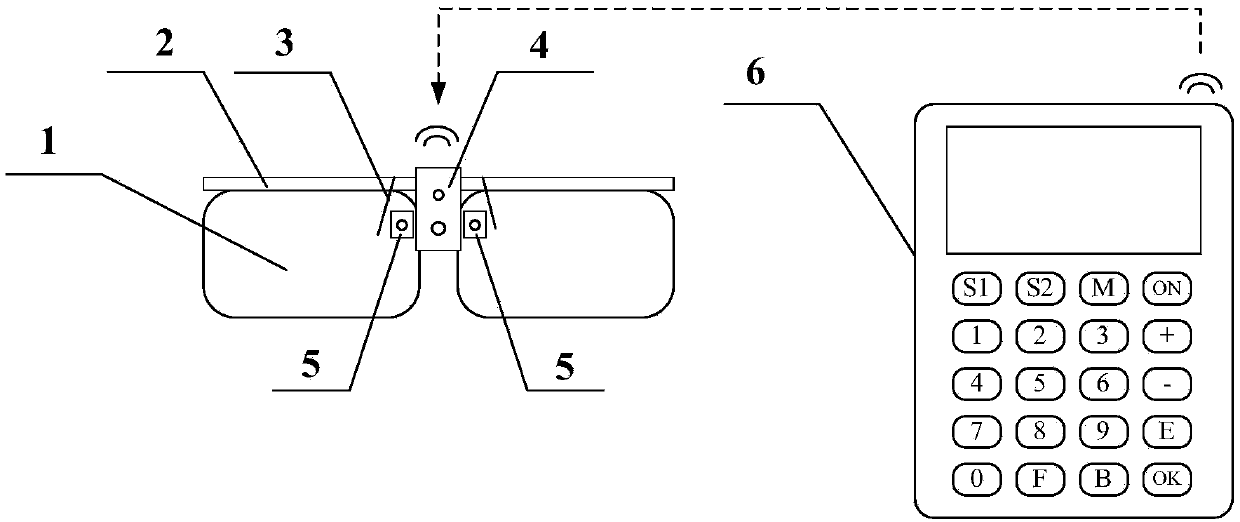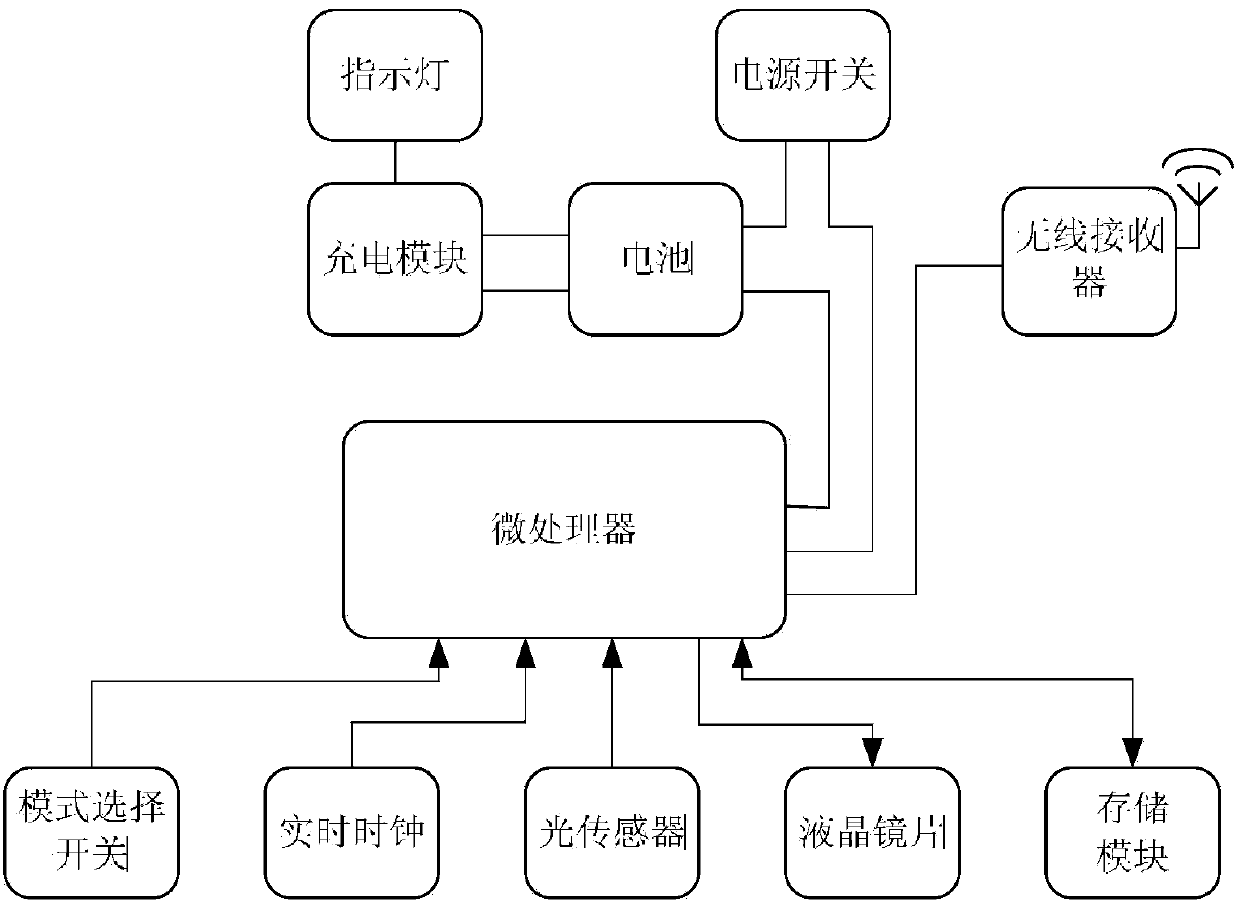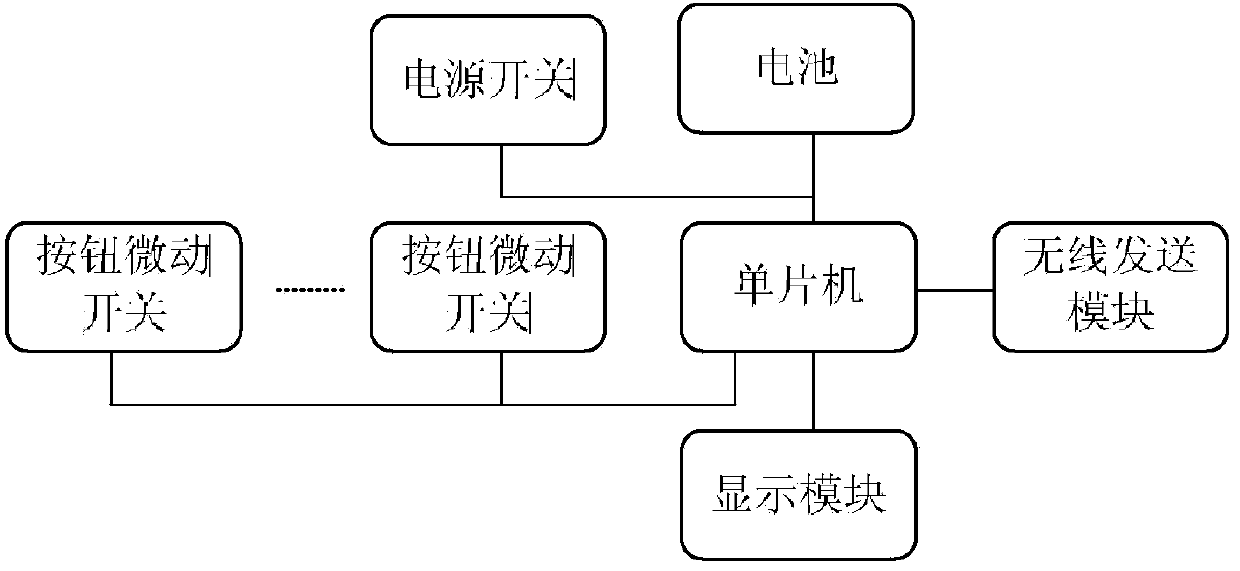Amblyopia correction and detection device
A detection device and lens technology, applied in the field of medical instruments, can solve problems such as unsatisfactory recovery of patients' stereopsis, recurrence of patients after recovery, and defects in principle, and achieve the effects of avoiding binocular stereoparallax, shortening treatment cycles, and facilitating clinical operations.
- Summary
- Abstract
- Description
- Claims
- Application Information
AI Technical Summary
Problems solved by technology
Method used
Image
Examples
Embodiment 1
[0019] refer to Figures 1 to 3 , a device for detecting and correcting amblyopia, comprising two liquid crystal lenses 1 embedded in the lens frame 2, and also including a main board 4 fixed on the lens frame 2, and a main board 4 respectively arranged on the inner surfaces of the two liquid crystal lenses 1 A control system composed of two optical sensors 5 and a remote controller 6 that communicates wirelessly with the main board 4; a chuck 3 is also arranged on the lens frame 2 through a spring, and when in use, the liquid crystal lens can be tightly clamped on the Ordinary glasses.
[0020] The mainboard 4 is provided with a microprocessor, a wireless receiver, a memory card module, a real-time clock, a mode selection switch, and a battery and a charging module connected by a power switch are connected to the microprocessor respectively;
[0021] The two liquid crystal lenses 1 are respectively connected to the microprocessor on the mainboard 4 under control, and the two...
PUM
 Login to View More
Login to View More Abstract
Description
Claims
Application Information
 Login to View More
Login to View More - R&D
- Intellectual Property
- Life Sciences
- Materials
- Tech Scout
- Unparalleled Data Quality
- Higher Quality Content
- 60% Fewer Hallucinations
Browse by: Latest US Patents, China's latest patents, Technical Efficacy Thesaurus, Application Domain, Technology Topic, Popular Technical Reports.
© 2025 PatSnap. All rights reserved.Legal|Privacy policy|Modern Slavery Act Transparency Statement|Sitemap|About US| Contact US: help@patsnap.com



